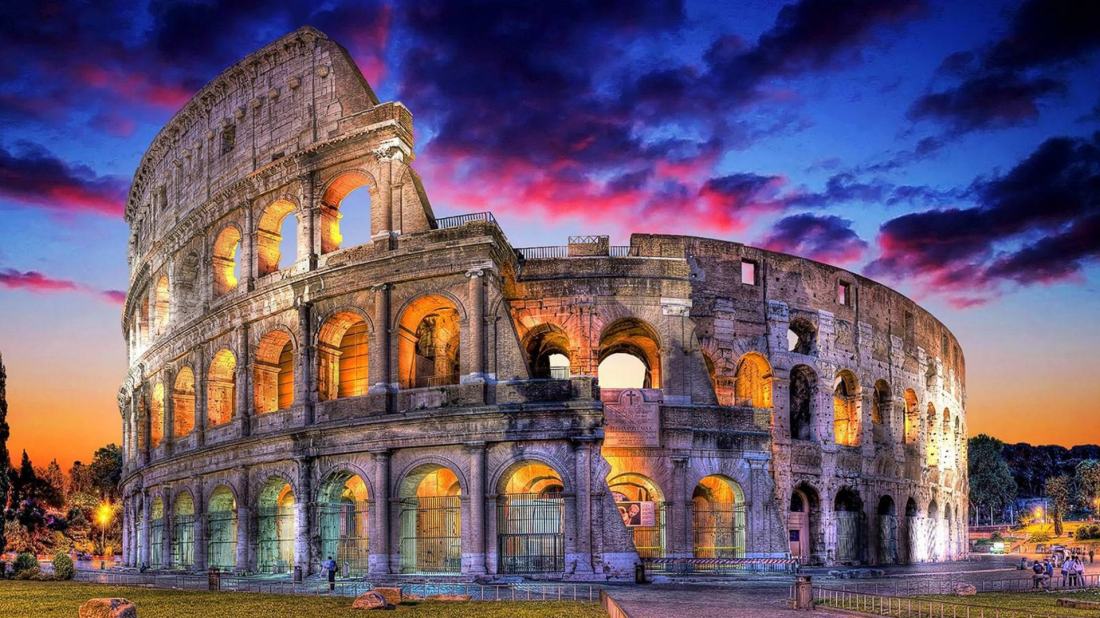Created pridie Non. Feb. MMXIX ANNO DOMINI
History Through Gaming: Final Blog
As the semester draws to a close, reflection is inevitable; this class is no exception. Looking back on “History Through Gaming,” there are many positives and just a few negatives to look at, so without further ado, let’s get right into it.
The Good
This course was super fun and unique, and I can very safely say I have never taken anything like it before. The use of video games as teaching tools was something my fifth-grade self would have been frothing at the mouth for, but as a college student I was able to control myself a little bit better; any and all frothing was done in the privacy of my dorm. Jokes aside, this class was pretty much exactly what I had hoped it would be, and I do not regret taking the class at all. I think with some refinement it would be very promising, and I of course have a few ideas.
What Could be Different
Why isn’t this heading titled “The Bad?” There really wasn’t anything “bad,” and so it would not be fair to label this part as such. However, there are things that could be improved and worked on. This is all simply one student’s opinion, so take it as is.
I think the single largest improvement to be made is in the focus of the class, and therefore the amount of games. If the class is more narrowly focused, for example, “Ancient Rome through Gaming” (I know I’m biased), then the amount of games required would be dramatically lowered. Further, I think it would allow for a more thorough look at each game, which is something Jeremiah McCall seems in favor of. Looking more closely at the games helps point out what is wrong with the games, and I don’t think there was enough of that. In my paper on Ryse: Son of Rome, I wrote on my fear of it solidifying the Hollywood tropes of Rome if taken at face value. If the games were more closely analyzed, this could be prevented, and thus more could be gained from the class. Building off of this comes my final idea, and it may seem a given but it can’t hurt to simply state it. If we are more closely analyzing games, and we are playing fewer games, we therefore should spend more time on each game.
Overall, HtG was a very engaging course that I will always recommend, for those that like history or for those that don’t. If you like history, this is a unique take on the subject and a great way to broaden your horizons. If you don’t? You need history credits anyway, and it’s better than just the readings!
HtG Blog 4/26/19
This week, I’ll be taking a look at a game I am very familiar with: Battlefield V. Battlefield is a first person shooter series, and this particular installment takes us back to World War II – or, in this game’s case, the British-German War, because my first and largest piece of criticism is the fact that the literal only two playable factions are the British and Germans. This really hurts the scale of the game; in-game cutscenes mention the different countries you fight in and factions like the Americans and French Resistance, but once the fighting starts you see the same few uniforms, which brings to me to my next complaint: the game’s customization.
Battlefield has never been a game to offer character customization, and with their first attempt it really shows. The different uniforms you can get are unique, but some are very outlandish and are unlikely to be seen in reality. There is a British uniform named “Union Jacked” that has written in bold white print “SLAY FOR THE QUEEN” on the back. The problem with that? There was no queen to slay for. The British monarch from 1937 until 1952 was in fact King George VI. Those dates are literally a 7 second Google search away, and the developers getting something like that wrong looks bad. The game was already marred by controversy at launch (something EA is all too familiar with at this point), and details like that do the game no favors. Another outfit, this time for the Germans, is called “Die Sturm Jäger.” This nomenclature is incorrect for several reasons. First, anyone familiar with the German stormtroopers knows that they served as specialists in WWI, but had no presence in WWII.* Second, “sturmjäger” is just one word. Finally, grammatically speaking, it should read “Der Sturmjäger,” with a masculine article (der).
Those two pieces of criticism aside, the game does do a good job on delivering a solid WWII experience. The weapons and vehicles are all very accurate, even allowing players to use both the rifle and shotgun barrels of the M30 Drilling (something I noticed Call of Duty does not allow) which pleased me greatly due to the nature of the weapon. “Drilling” means “triple” in German, and the gun’s three barrels reflect this. The battles are very immersive, with hulking tanks firing shells while planes dogfight above, but the infantry combat is my favorite. Each weapon feels different to use, and they are almost all satisfying (looking at you, Liberator).
When all is said and done, as much as the game is fun, I simply couldn’t recommend using it as a teaching tool when there are far better WWII games out there accuracy-wise. As I stated, this game already feels small with the limited amount of factions, and I opted not to even touch on the role of female combatants and the censoring of Nazi imagery (the latter was for marketing purposes, as some countries outlaw the use of swastikas, and doesn’t really bother anyone anyways, but it’s certainly not helping the game either). The game is a fun historically-themed shooter, but that’s all I can really say about it.
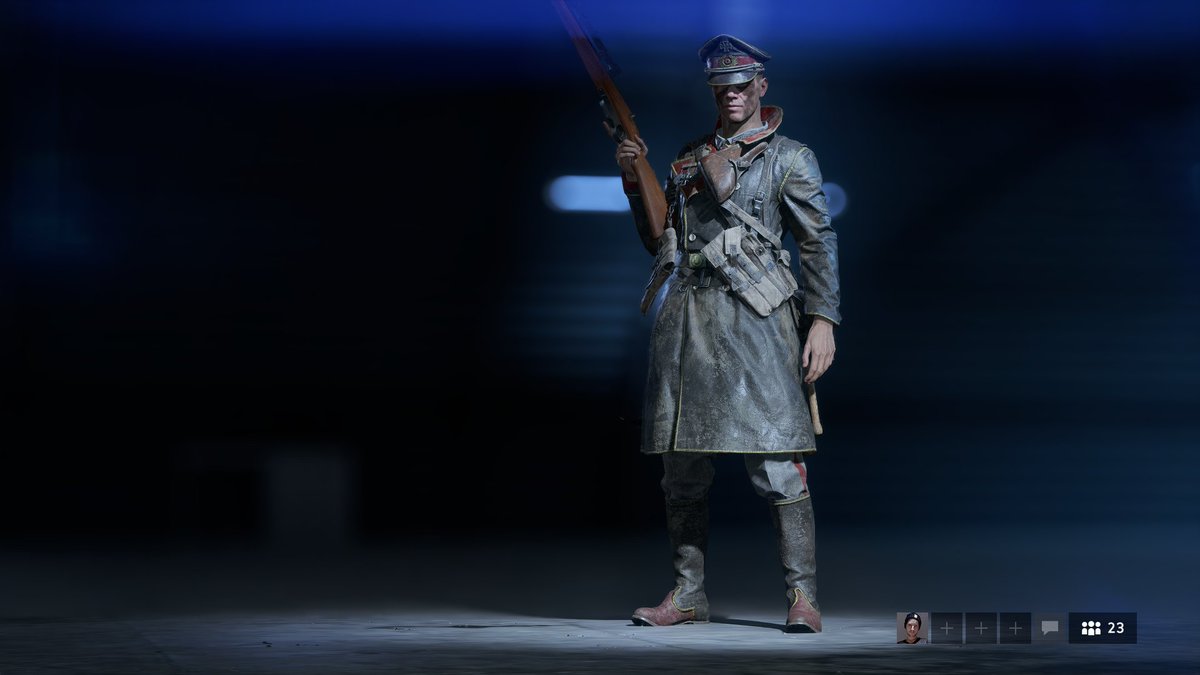
HtG Week of 4/8/19
Having completed Total War: Shogun 2, it’s time to go back to familiar territory once more; specifically, the American Civil War in Ultimate General: Civil War. Civil War is a very detailed RTS game – a genre I am admittedly bad at. However, even a novice such as me can recognize the merit this game holds. It is incredibly detailed in its approach to unit management as well as overall map layouts and objectives, which perhaps psyched me out a little as I marched into my first battle; as the adage goes, though, “all’s fair in love and war.”
Civil War starts off by giving you several choices for your “backstory,” being just different focuses you can choose from to start off. I immediately chose as many options for training as possible, because a well-disciplined army can overcome any obstacle, right? (No, according to my experiences). I loaded the first mission and was immediately thrust into battle. My regiments needed to capture Philippi, but were ambushed by enemies in superior positions; I therefore needed to reposition my soldiers to engage and overcome the enemy. After defeating the ambush, I moved toward the city… and was rebuffed and routed, requiring me to start over. After another attempt, I was able to capture the city and complete the mission.
The point of such a tangent? To demonstrate some of the things I learned while playing. Soldiers are well organized into different regiments and divisions, and while in combat, you have the option to order your troops to “charge!” towards the enemy, allowing them to gain bonus damage in melee. I found this useful to clean up a weakened enemy position while they were reloading, seeing as the reloads for the rifles of the time period could be lengthy. This gives a look into the military tactics of the time, which were somewhat similar to those used in the American Revolution; rigid formations and intense melee combat.
One final thing the game emphasizes that is important to note is the infrastructure of the Union forces. Railroads are utilized to move troops and supplies, and were of great import in the Civil War, helping the Union emerge victorious. The game’s emphasis on it accurately reflects its importance to logistics in the war.
Overall, the game has many virtues in the department of historical accuracy. The game’s campaign follows the events of the Civil War; the soldiers are equipped with the proper weapons (along with the new technology of rifled barrels, which are referenced in the game); the Union’s use of railroads and logistics is demonstrated to help in battles, and the in-game forces are commanded by named generals of the era. Ultimate General: Civil War is perhaps the most historically reliable game we’ve played to date.
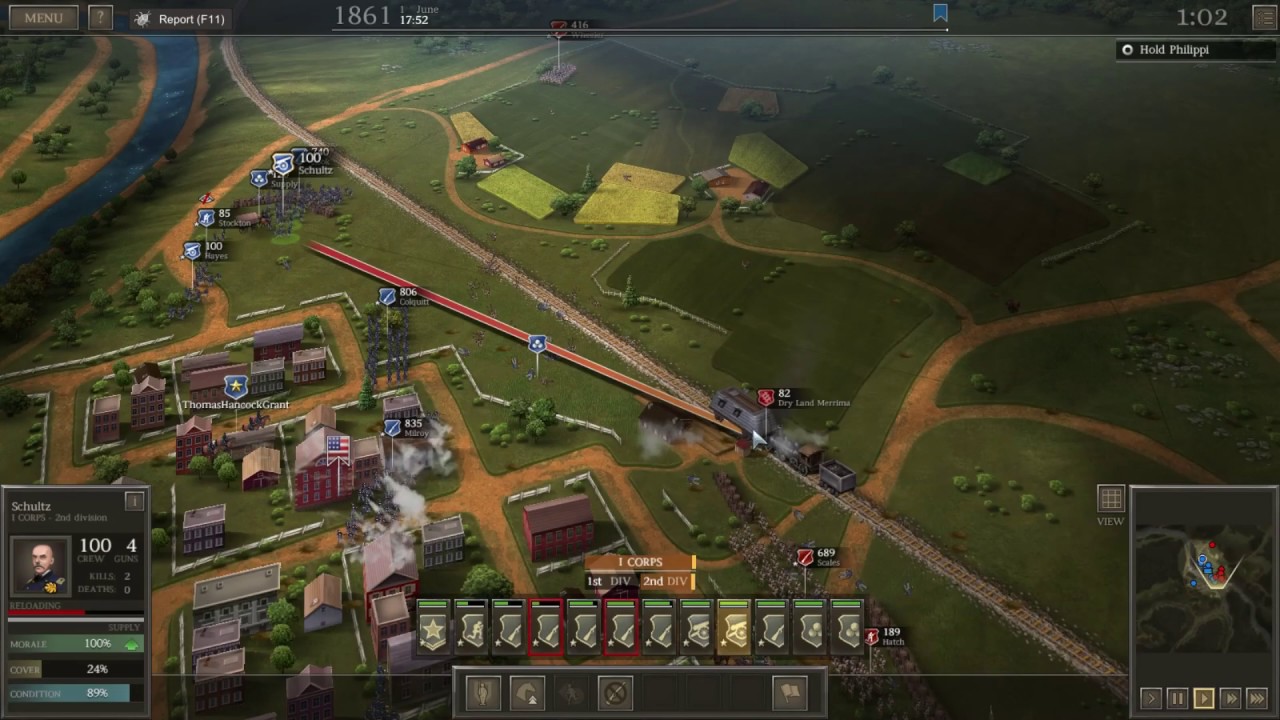
Image source: screenshot from
https://www.youtube.com/watch?v=eHM_NYrIs3w
HtG Blog 4/1/19
Feudal Japan is a wonderful example of that unique time period where armies are just starting to mix in gunpowder with their melee combat, and you can see tactics shifting to attempt to accommodate this drastic change. Total War:Shogun 2 is a game that allows you to take control the Daimyo of one of Japan’s warring clans in an attempt to become the next Shogun.
Shogun 2 is a mix between a Real-Time Strategy game and a City-Builder. The majority of the game is spent building your city and armies a la Civilization, while the combat is real time, and you must maneuver your soldiers around the enemy and defeat them. The game’s military is far more complex than that of Civilization, however; you must maintain a sizable force of soldiers, a general to boost morale, and you must plan your attacks around the weather and time of year; I made the mistake of laying siege to a rivaling clan in the dead of winter and paid the price for it.
You also have the option to arrange your men in formations while they prepare to fight, as well as having to monitor their energy – if they run too much they will grow tired and perform poorly in combat. It is a very engaging and entertaining system to work with, and feels incredibly realistic compared to the other strategy games I have played.
The city-building aspect is similar to Civilization in that you need to maintain a healthy economy while also allowing yourself to train additional military units to resupply your forces. You also can interact with the surrounding Daimyos, keeping peace or going to war depending on your style.
Jeremiah McCall encourages students that play games educationally to try and pick out things that are accurate and inaccurate. However, my knowledge on feudal Japan is incredibly limited, save for a little bit about the Battle of Shiroyama (and I only know about that from a song). Regardless, even someone as fresh to this subject as I can tell that this game is worth its salt. The care given to the different soldier classes in combat leads me to believe that the formations and tactics available to the player were inspired by tactics used by real generals. As for equipment, that I cannot vouch for, but the use of gunpowder in the late game does call to mind that battle I mentioned previously; it is notorious for being the final battle of the Samurai order against the new Imperial Japanese army, wielding firearms against the Samurai and their Way of the Sword. Anyone who is looking for a strategic simulation on Feudal Japan need to look no further than Total War: Shogun 2.
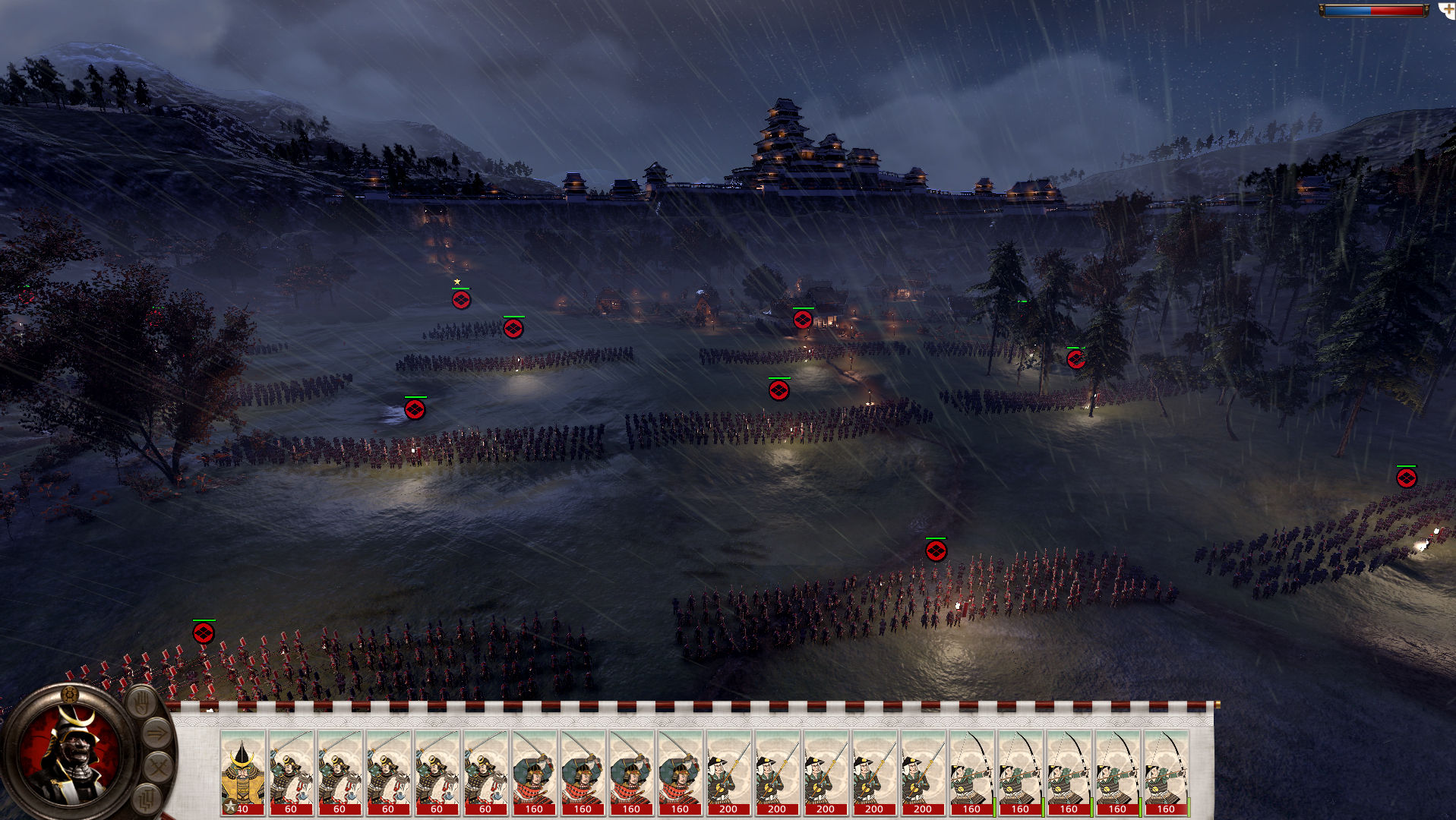
HtG Week of 3/19
Stronghold: Crusader is a castle-building strategy game that takes place during the Crusades, as the name implies. The game supports multiplayer with other people online, but the game’s main attraction comes in the form of several “Campaigns.” These campaigns allow you to control the Crusader forces from Europe, or to fight off the Christians with Saladin’s army. Aside from different units and other aesthetics, the core gameplay remains the same for either faction: you build up a castle while maintaining an income, rationing food, and defeating the opposing warriors.
As stated, each side has unique units to fight with. The Crusaders have very powerful Knights, which are mounted soldiers wearing what typically comes to mind: long white robes over mail, with the famous great helm. Swordsmen are similarly clad soldiers, but on foot rather than horseback. On the other side of the coin, Arabian Swordsmen serve as the main melee unit for the Middle Eastern forces. They wield a curved scimitar and use a round shield for defense. Typically, the European units are more powerful, but at the cost of a slower movement speed.

Stronghold features some historical figures in the game as well, typically as leaders of armies. The Sultan, Saladin, has already been mentioned, but the leader of Crusader forces is King Richard “the Lionheart.” Given this nickname due to his skill as a leader and warrior, Richard was in command during the Third Crusade.
The game overall has historical inspirations, and the campaigns tell different short stories about the Crusades (1st Crusade and 3rd Crusade for the Knights, and the 2nd Crusade for the Middle Eastern forces; the final campaign depicts infighting among the Europeans). The units each side fights with, as well as the leaders featured, are accurate as well, and so the game serves well as a look at the surface of the initial Crusades.
History Through Gaming 2/25/19
For the past few weeks, our class was focused on classical Greece, and the game we played to reflect this was Assassin’s Creed: Odyssey. Odyssey takes place during the Peloponnesian War between Sparta, Athens, and their respective allies. While you don’t take a direct stance in the war, the freedom the game gives you allows you to aid whichever side you choose, whenever you want. The game’s story is focused on Alexios/Kassandra’s family (from here I will simply use Alexios, as he is the character I play as), and the war is mostly in the background of the narrative. Odyssey, taking place in one of Greece’s most tumultuous time periods, has you meet many important figures, including Socrates, Herodotus, Aristophanes, Sophocles, and the Spartan Commander Lysander.
The game’s scripted moments, such as cutscenes and mandatory dialogue, are typically fairly accurate to history and often demonstrate key characteristics of the historical figures involved. Socrates, for example, is just as inquisitive as one familiar with him would expect. The player is given dialogue options in-game, and in one conversation with Socrates, I attempted to lie to him. He quickly made a fool of me by using my own words against me. Such interactions are plentiful, such as the bickering of Greece’s famous playwrights Aristophanes and Sophocles, or the quiet wisdom and wonder of Herodotus.
The gameplay found in Odyssey, however, should not be taken as historically inspired. Moments such as this do not reflect actual combat practices of the time, obviously. They do, however, lead to some hilarious endings to the game’s tougher opponents. The equipment in the game does reflect ancient gear, but liberties obviously must be taken to ensure the game has unique equipment to collect.
Assassin’s Creed in general has always been a historically themed series, but like any historical video game, they must be regarded as such: a game. While it certainly has its fair share of historically accurate facts and characters, it is best used as a supplement to a student’s curriculum.
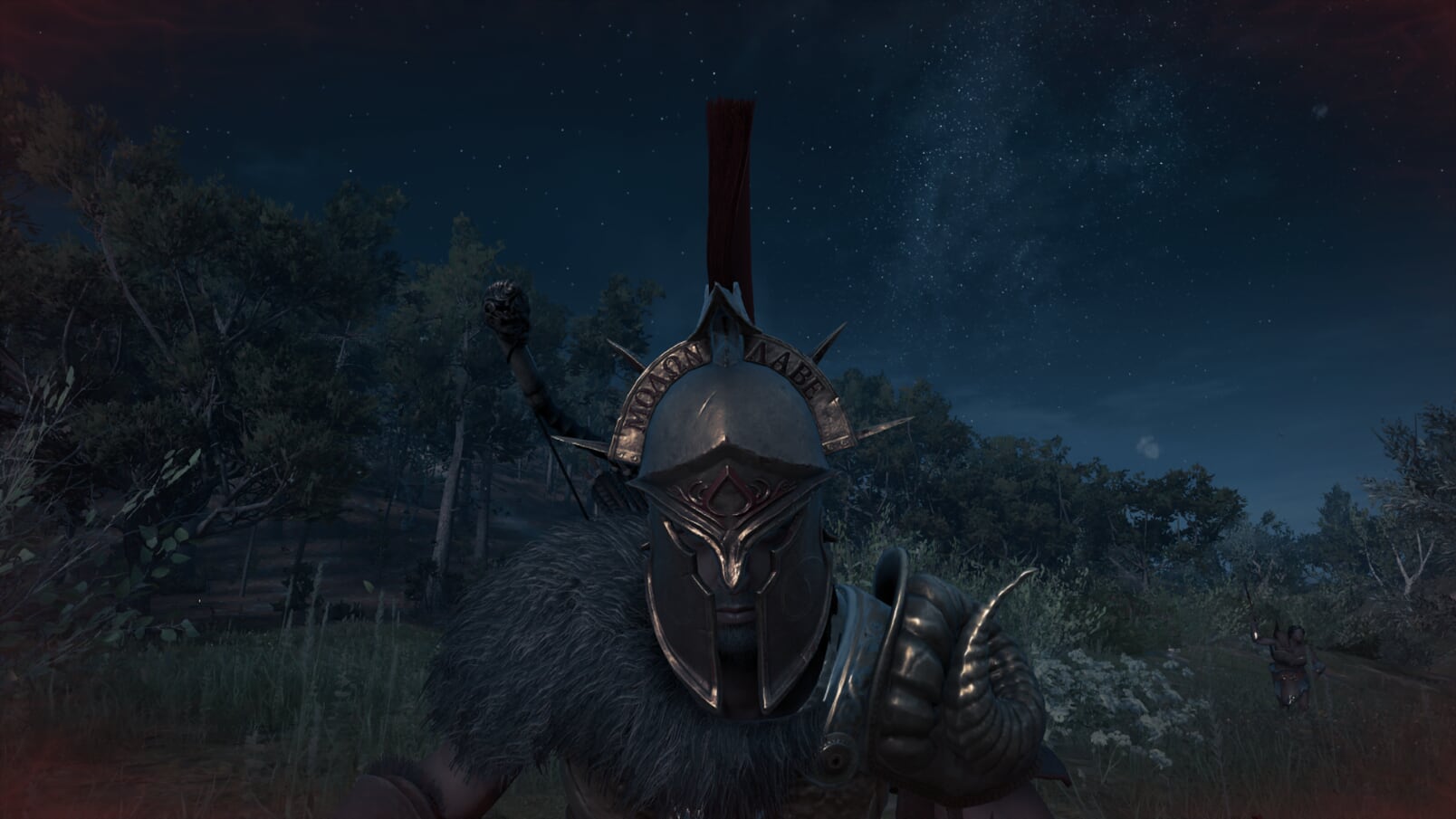
HtG Week of 2/11
In History through Gaming, the first game we looked at was Sid Meier’s Civilization: V. The Civilization series is a turn-based city-building game that involves the construction of different cities and units in order to spread one’s influence as much as possible and, eventually, win the game. This can be achieved through several different means: militarily; scientifically; culturally; diplomatically; or religiously. Each of the civilizations a player can choose from is more or less suited towards at least one of these styles, but of course anything goes. France, for example, is able to generate enormous amounts of culture points, spreading its influence to other cultures with unique buildings called Chateaus. Sweden gains benefits to its relations with city-states. The unique benefits and units attributed to each civilization serve as a small glance into their respective cultures. Rome builds structures in other cities fifty percent faster if that building already exists in the capital. This emphasizes a central hub, much in the manner that while Rome’s territory spread far, its main cultural center was Rome itself. America’s benefits include cheaper purchasing of land compared to other civilizations. This, of course, is in reference to “Manifest Destiny,” an important mindset in American expansion. Unique military units exist as well, and these typically reflect a part of that civilization’s most powerful or most prominent moment in history.
Civilization plays a large game of historical “what-if?” It emphasizes important aspects of each civilization and their culture, but allows them the player to make their own fate. If one wanted to pit the Aztecs against the Koreans, one would be able to do so, and they could have it play out any way they want. But each civilization has its strengths and weaknesses, and these are highlighted in gameplay. This fact is what makes the game such a valuable educational tool.
The Journey Begins
Thanks for joining me!
Good company in a journey makes the way seem shorter. — Izaak Walton

